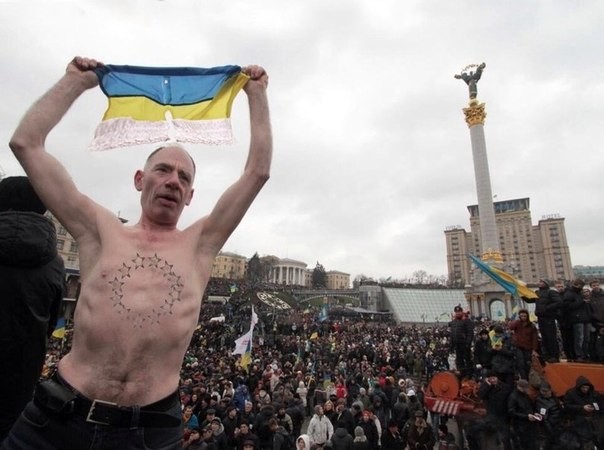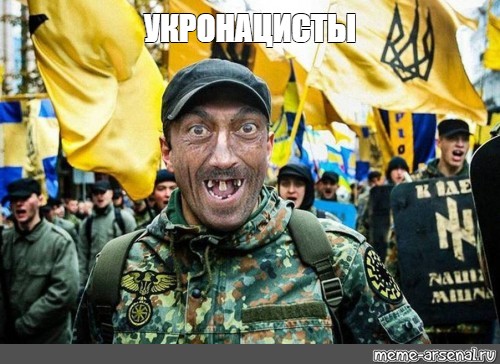The Uniate Church and the Ruin are two concepts from Little Russian history that inform the Ukrainian reality of today…
From the olden days, the Holy See in Rome sought to conquer the Holy Rus’. Alexander Nevsky had to repel an invasion of the Teutonic Knights but there was a much more fearsome foe than the knights, the Rzeczpospolita, the Polish-Lithuanian Commonwealth. Both constitutive realms of this empire began expanding their domains into Rus’ already in the fourteenth century with the seizure of Halychyna by the Kingdom of Poland. Coincidently, a gene test my brother did shows we are descended from the Lithuanians that conquered Rus’ and there is family legend about a “Polish” ancestry on my Russian side.
There was a difference in faith, while the Westerners answered to the Pope, Rus’ answered to the Eastern Churches and eventually, Moscow became free of Constantinople following the Ottoman conquest, and the only rightful spiritual authority in Rus’. Fearing this Muscovite influence, the Polish masters of Ukraine decided to bring the Orthodox Churches under Roman Catholic control. In 1595 at the Union of Brest, the bishops of Little and White Russia under Rzeczpospolita accepted Roman domination. Several decades have passed and a rebellion erupted in Little Russia, which saw the Cossacks swear fealty to the Russian Tsar. This has plunged Ukraine into a destructive period known as the Ruin, which resolved itself really only in the eighteenth century with the Russian Empire coming to dominate the entirety of Little Russia, and the neutralisation of the Rzeczpospolita.
But unfortunately, the Russian Empire failed to take Halychyna in the division of Poland. Halychyna, or Galicia as it is also known, is a part of Rus. West of Lvov, there lies a town called Rava Rus’ka, that’s where Rus’ begins and it goes all the way to Vladivostok. Halychyna fell under the Austrian rule, and the Uniate Church survived there. This later served as the nucleus out of which will rise Ukrainian nationalism. Starting in the second half of the nineteenth century, the Austria-Hungary, as the Habsburg realms came to be known, entered into alliance with the German Empire, the Russian Empire joined France in an Entente. The Habsburgs became enemies of Russia.

Austria was faced with a problem of Russians on its territory. The Austrians viewed so called Russophillism of many of the inhabitants of Halychyna with suspicion. Thousands of people from Halychyna made annual pilgrimage to the Pochayevskaya Lavra, an Orthodox monastery right across the border from Austrian Halychyna in the Russian Empire. The Austrian authorities began repressing the local Russophiles. Maxim Sandovych, an Orthodox covert from the Uniate Church was tortured to death by the Austrian authorities prior to the First World War. After the Russian defeat by the Central Powers in 1915, the Austrians have interned the Russian population in concentration camps in Terezín in Bohemia, and in Thalerhof in Styria. Wikipedia has this to say about Thalerhof:
The Austro-Hungarian authorities imprisoned leaders of the Russophilism movement among the Carpatho-Rusyns, Lemkos, and Galicians; those who recognized the Russian language as the literary standard form of their own Slavic dialects and had sympathy for the Russian Empire. Thus, the captives were forced to abandon their identity as Russians and obtain a Ukrainian identity. Captives who identified themselves as Ukrainians were freed from the camp.
Terezín became the site of a genocide again during WWII, when the Jews were interned there.
Simultaneously with the repression, the Austrians have supported a development of a Ukrainian identity that would be different from Russian. Remember dear readers, national identities are always imposed from above and people can always be reprogrammed. Polish nobility long toyed with the Ukrainian idea. According to Mikhail Onufrienko, a blogger from Kharkov that now lives in Crimea in exile, the idea to rename the South Western part of Rus’ into Ukraine originated already in the sixteenth century with the Jesuit envoy, Antonio Possevino. Part of the reason the Polish rebellions against Russian rule of the nineteenth century failed was because the Russian peasants didn’t go along with their Polish masters. Many of these Poles and early adepts of the Ukrainian national idea fled to Austrian Halychyna, where they continued their work with Austrian support.
A good example of the Austrian support for Ukrainian nationalism is Mikhailo Hrushevsky, who was given a cushy job of a professor in Lvov and a hefty grant to write Ukrainian history, a historical conception that removes Ukraine from the common Russian history. If you were to write the true history of Ukraine, you would have to start with Nikolay Kostomarov, Ivan Franko, the afore mentioned Hrushevsky, and not somewhere deep in the past, like in the Cossack period. The Cossacks referred to themselves as Russians. I would not even speak much about Shevchenko, who also identified as Russian. But Hrushevsky did just that, relabelled them all as Ukrainians. I call the conception that Ukraine emerged out of Ukrainian nationalism, which was heavily supported by the enemies of Russia, “a short history of Ukraine.”
By the First World War, there was a sizeable community of newly created Ukrainians in Halychyna. The first time the nationality “Ukrainian” appeared officially was in 1916, when the future Emperor Charles I inspected the troops in Halychyna, and declared everyone in the camp to be Ukrainian. After the revolution in Russia, the Communists, who were opposed to Russian nationalism made the decision to break down the Russian nation by employing the Austrian project, and began a programme of mass creating the Ukrainians. For this purpose, they brought many teachers from Halychyna, including the aforementioned Mikhailo Hrushevsky. Russia’s Ukrainian headache is a bolshevik legacy.
Early Ukrainian nationalism was very much centred around the Uniate Church, the Austrians viewed the papists as loyal citizens. Ukrainism was therefore an extension of the previous Union, the Union of Brest. In more recent times an idea of a united Europe appeared, and since the 1990s, the European Union is bringing these ideas into reality. But parallel with the European Union that we all know from the European Parliament, and the European Commission, there is also a spiritual union and the ideological founder of European integration, the Pan-European Union.
The importance of union with Rome has slightly diminished in recent times with the decline of Catholicism and religiosity in the West, and the centre of control gravitated eventually to Brussels. However, there is a lot of “Habsburg” influence on the symbolic basis of the EU. You see, the Pan-European Union has given the European Union all of its symbols. The circle of twelve stars:

The twelve stars symbolise the twelve signs of the Zodiac, and the number 12 stands for completion and perfection. Note the Cross, as if indicating an inheritance from the Roman Catholic project. The secular EU, and the European Council of course do not have the cross in their flag. Furthermore, the anthem of the European Union, the Ode to Joy, was adopted by the Parliamentary Assembly of the Council of Europe in the 1970s on the suggestion made in 1955 by Richard von Coudenhove-Kalergi, a son of a Bohemian Nobleman and an upperclass Japanese gaijin chaser, the founder and the first head of the Pan-European Union. Now check out the Ode to Joy on the Euromaidan, they even created new updated lyrics for it in Ukrainian. After Coudenhove-Kalergi, the head of the Pan-European Union was Otto von Habsburg.

It seems like the Austrian nobility found itself a new tool of domination. They have switched Catholicism for European integration. Ukraine suffers a new period of strife currently, Ruin 2.0, caused by a desire for another Union, as expressed in the Cargo Cult festival, the Euromaidan. Ukrainians seem again victims of some Austrian voodoo. And the EU is not even able to make Ukraine a candidate for membership.

Don’t be a cuck, don’t fall under the spell of an Austrian voodoo. Although, I have to say many adepts of Ukrainism are also adepts of another Austrian voodoo, created by the arch-opponent of Coudenhove-Kalergi.

